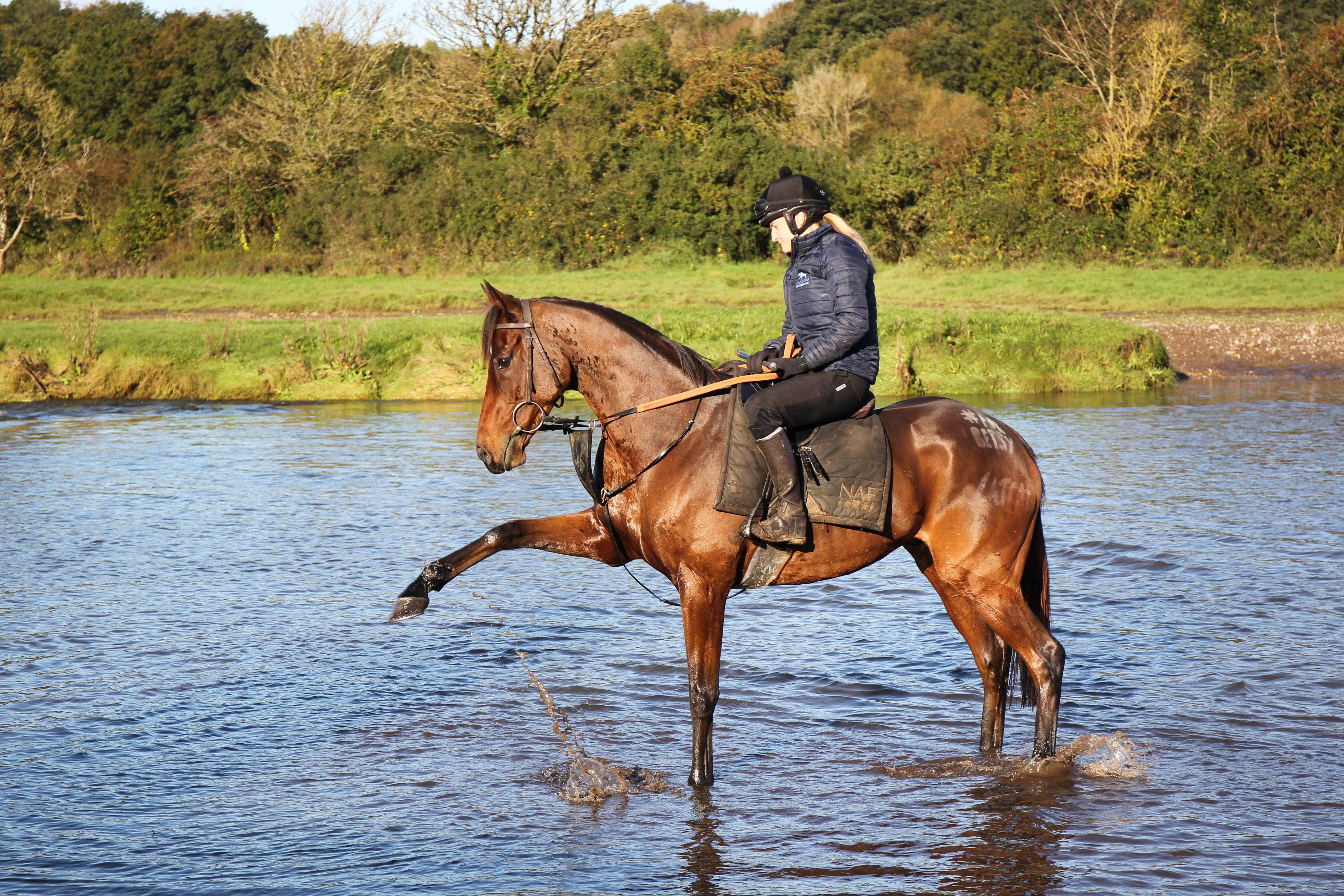Kitty’s Light, known as the "public's horse," has captured hearts with a heartwarming tale. But who is behind the scenes training and owning this beloved horse?
The Trainer Behind Kitty’s Light
Christian Williams is the mastermind behind Kitty’s Light’s training. His daughter Betsy, who battled leukemia, shares a special bond with the horse, bringing joy and hope into their lives.
Christian, 41, revealed to the Sun, "After going through such a terrible time, Kitty brought joy back into our lives. There was light at the end of the tunnel."
Kitty’s Light is one of the 25 horses under Christian's care at his stables in South Wales.
Ownership of Kitty’s Light
Kitty’s Light was initially bought by Christian Williams, who later sold half of the share to Richard Bedford. The other half is owned by a syndicate, according to the Telegraph.
Welsh Pride at the Grand National
Kitty’s Light proudly represents Wales as the only Welsh horse competing in the Grand National 2024, set for Saturday, April 13, 2024, at 4 pm.
Kitty’s Light's Pedigree
Kitty’s Light boasts a lineage of father Nathaniel (IRE) and mother Daraiyna (FR). Nathaniel achieved notable victories at prestigious races like the King Edward VII Stakes and the King George VI and Queen Elizabeth Stakes in 2011.
Betting Odds and How to Bet on Kitty’s Light
With current odds at 16/1 on bet365.com, Kitty’s Light has amassed £439,295 in prize money from 35 races. To wager on this fan-favorite at the Grand National, follow these steps:
- Register at bet365.
- Join by completing the registration form.
- Deposit funds using a card.
- Select the 4.00 pm Aintree race on Saturday.
- Add Kitty’s Light to your betslip and stake your bet.
- Cheer him on to victory!
- Receive £30 worth of bet credits upon settlement.
Frequently Asked Questions
How do I condition a horse for racing?
A racehorse’s conditioning is a process that involves a combination of slow, long distance work for stamina as well as shorter, faster workouts for speed. Over time, the horse’s cardiovascular system and musculature must be strengthened through an exercise program that simulates racing without causing injuries or undue strain.
Can you race a horse on any track?
While initial training can occur on a variety of tracks, specific race training often requires facilities that simulate the conditions the horse will face in competition. This means that you need to have tracks that are of the correct size, with the same kind of surface your horse will be racing. Using the correct track helps condition the horse appropriately and gives them experience with that particular racing environment.
What is the importance of a horse’s pedigree to racing success?
While pedigree can be an indicator of potential, it is not the sole determinant of a racehorse’s success. The lineage of a horse may indicate an inherited ability for speed or endurance. However, training, health and temperament can also be influential factors. A horse’s natural ability can be maximized by good training, and it may even outperform horses with impressive pedigrees.
What health precautions do you need to take when training a horse for racing?
Preventing injury and illness requires that you pay attention to your racehorse’s health. Regular veterinary checks, vaccinations and dental care are important. Equally important is monitoring the horse for signs of fatigue, strain, or discomfort. By implementing a training plan that is well thought out and allows for a gradual progression of intensity, you can minimize the risk of injury to your musculoskeletal system.
How can you maintain the mental health of a racehorse?
The mental health of a racing horse is just as important as its physical condition. Varied routines, regular turnout to pasture, mental stimulation, and gentle, patient handling all contribute to a racehorse’s psychological well-being. Ensuring the horse has social interaction with other horses and providing a calm, stable environment helps to prevent stress and behavioral issues.
What is the first step in training a racehorse?
During the first phase of racing a horse, there is a critical “breaking” stage where the horses become accustomed with a saddle, bridle or the weight from a rider. In these early sessions patience and gentle treatment are essential to ensure that the horse becomes comfortable with humans and the equipment he will wear during his racing career.
Statistics
- Statistically, less than 1% of thoroughbred foals born each year will go on to win a stakes race.
- Gastrointestinal issues affect up to 90% of racehorses during their training, emphasizing the need for careful dietary management.
- Research has found that a racehorse’s stride length can increase by up to 7% following specific strength and conditioning programs.
- Around 80% of thoroughbred racehorses begin their racing careers by the age of two, according to industry estimates.
- Approximately 70% of a racehorse’s diet consists of forage, with the remainder made up of grains and supplements to meet their high-calorie needs.
- Racehorse mortality rates during racing have been observed to be between 1.5 to 2 deaths per thousand starts, depending on the racing jurisdiction.
External Links
theridinginstructor.net
bloodhorse.com
equibase.com
thoroughbredracing.com
keeneland.com
thoroughbred-racing.net
How To
How to Choose the right race-specific equipment for your horse
To improve performance and not burden the horse, use lightweight, durable tack. Racing saddles have been designed to be lightweight and interfere with the horse’s speed as little as possible. Racing bridles should be slim and strong to provide control without extra bulk. Choose racing plates instead of traditional horseshoes to enhance traction and speed on the track. Make sure your tack fits correctly to avoid injuries and ensure comfort when racing or training.

